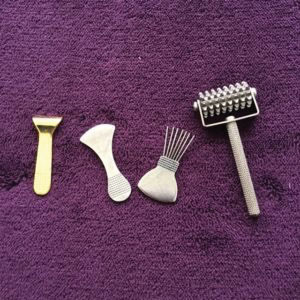Do Kids Really Get Acupuncture?
 Parents look at me with shock and surprise when I say that I treat kids with acupuncture. Many parents wonder how kids sit still and whether they are afraid of needles, but using acupuncture techniques with children is very different than with adults. Once parents see how easy it is for their kids to be treated with acupuncture techniques, they often prefer to try it before other interventions because it is less invasive and has no unwanted side effects.
Parents look at me with shock and surprise when I say that I treat kids with acupuncture. Many parents wonder how kids sit still and whether they are afraid of needles, but using acupuncture techniques with children is very different than with adults. Once parents see how easy it is for their kids to be treated with acupuncture techniques, they often prefer to try it before other interventions because it is less invasive and has no unwanted side effects.
With children, the treatment always depends on the temperament of the child. Some children come in wide-eyed and excited to try something new, while others are more cautious. I always watch a child’s body language to see how open they are to trying any of the tools I use. I always explain that just like when they get a cut, the body can heal itself, and we are helping the body to heal itself.
Acupuncture and pediatric massage can help kids with a long list of issues, such as:
- ADD/ADHD
- Allergies
- Anxiety/depression
- Asthma
- Chronic ear infections
- Constipation
- Difficulty putting on weight
- GERD
- Sleep troubles
- Stomach aches
There are many ‘acupuncture’ techniques that can be used for children, to increase the bodies’ ability to heal itself. besides the typical needles most people associate with acupuncture.
Shoni Shin massage

(Japanese Shoni Shin Tools)

(Cupping With Soft Silicone Cups)
Point Stimulation
After that, I will target certain points on the body just like I would with an adult, but using different tools. I have a point stimulator, which I call it a ‘blinky’ because it has a blinking green light that kids like to watch. It sends a very mild current to the acupuncture point to stimulate it. Another tool I use is a cold laser, which excites the tissue at the point. Both of these draw the brain’s attention to the acupuncture point in a similar way to needles.
Taps
Sometimes I do use the smallest, thinnest needles with kids. I call them ‘taps’ because they are only tapped in shallowly and then removed immediately. Sometimes the needle is just tapped lightly on the surface of the skin, a common Japanese style of acupuncture.

(Red or Blue Cold Laser)
For older kids, I explain how taps work and usually demonstrate on their parent. I’ve had many patients over the age of 7 who enjoy the novelty of getting taps. I have a number of pre-teen and teenage patients who love to come in for help with anxiety, depression, growing pains, or menstrual cramps and enjoy a mini-adult treatment of 10-20 minutes relaxing on the table.
Involving Parents

(Point Stimulation With The ‘Blinky’)
If you’re not sure how your child will react to these various acupuncture techniques, you can make an appointment for a pediatric wellness visit. A pediatric wellness visit is a 20-30 minute session that includes checking breath sounds and ears, Shoni Shin massage, and an introduction to the non-needle tools of pediatric ‘acupuncture’. It is not a time to address specific health concerns that require a complete intake, but it is great for exposing your child to the idea of acupuncture-based techniques and seeing how they like them.
Naomi Skoglund L.Ac. MSTCM, MS. Ed. is a licensed acupuncturist, herbalist, and the owner of Six Branches Family Acupuncture. She also has a Masters of Science in Childhood Education with a focus on Special Education and was a teacher for 8 years before becoming an acupuncturist. You can find out more about her practice at: www.sixbranchesacupuncture.com.




